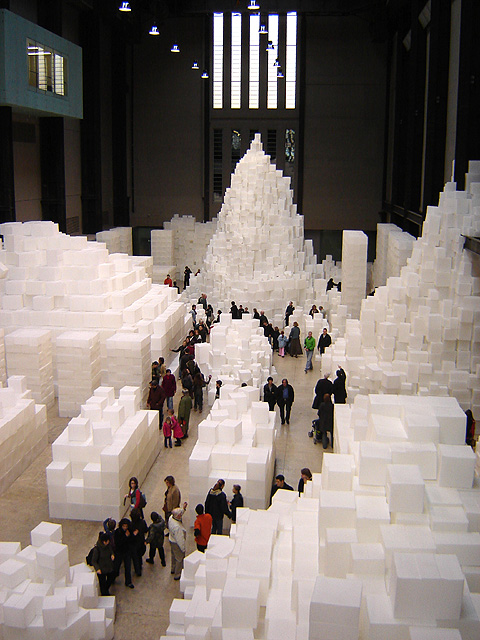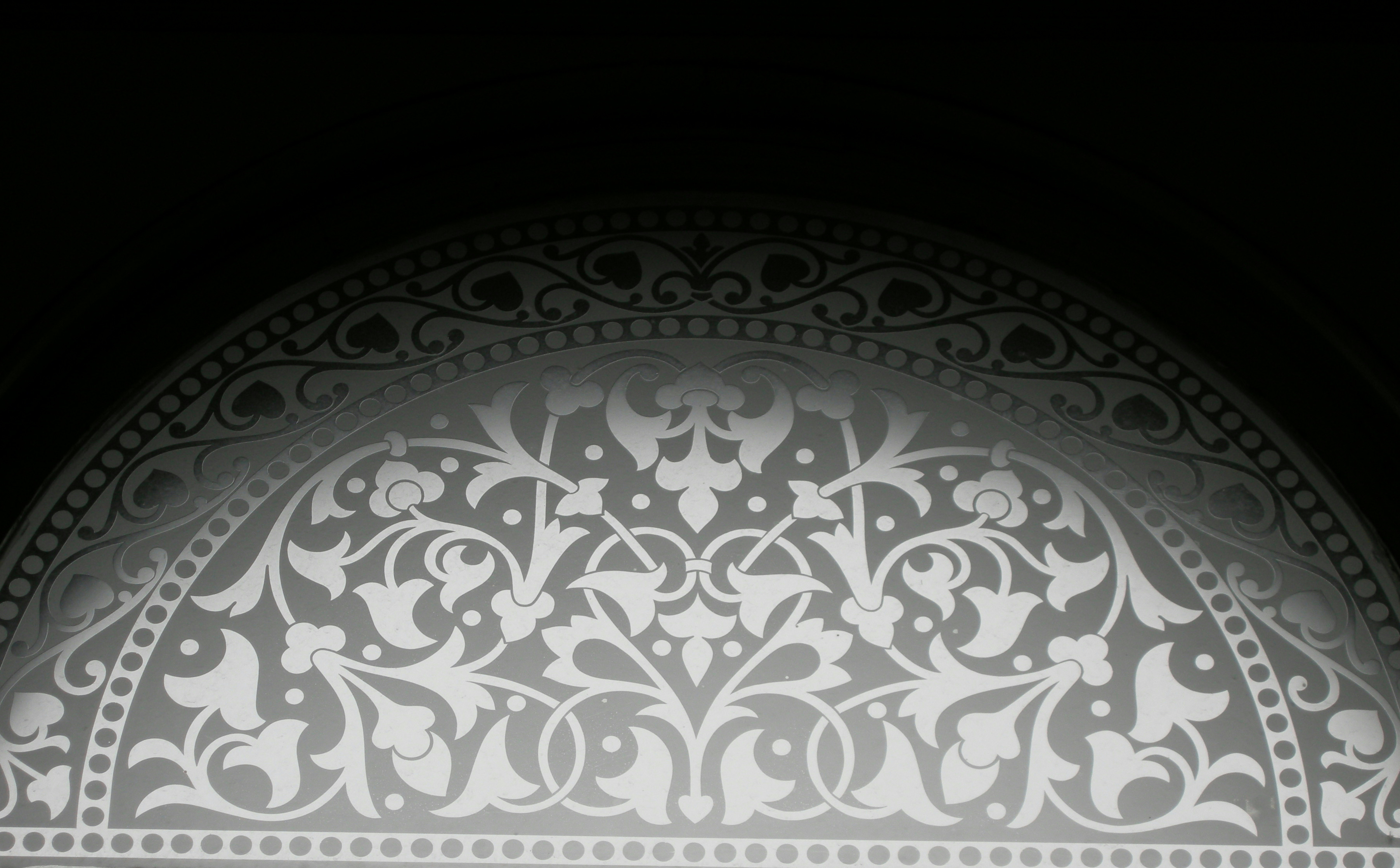|
Kunsthaus Bregenz
The Kunsthaus Bregenz (KUB) presents temporary exhibitions of international contemporary art in Bregenz, Vorarlberg (Austria). History Commissioned by the State of Vorarlberg and designed by the Swiss architect Peter Zumthor, the Kunsthaus Bregenz was built between 1990 and 1997. The KUB opened in July 1997 with an exhibition by the American artist James Turrell. Edelbert Köb, founding director (1997–2000) of the Kunsthaus Bregenz, was succeeded by Eckhard Schneider (2000–2008) and Yilmaz Dziewior (2009–2015). Rudolf Sagmeister was the curator for 30 years (1992–2022). Thomas D. Trummer has been director of the Kunsthaus Bregenz since May 1, 2015. For the celebration of its 25th anniversary, the KUB organised an exhibition at the Biennale in Venice from April 20th to July 4th, 2022. Architecture The Kunsthaus Bregenz was designed by the Swiss architect Peter Zumthor, 2009 Pritzker Architecture Prize laureate, and winner of the Mies van der Rohe ... [...More Info...] [...Related Items...] OR: [Wikipedia] [Google] [Baidu] |
Bregenz
Bregenz (; gsw, label= Vorarlbergian, Breagaz ) is the capital of Vorarlberg, the westernmost state of Austria. The city lies on the east and southeast shores of Lake Constance, the third-largest freshwater lake in Central Europe, between Switzerland in the west and Germany in the northwest. Bregenz is located on a plateau falling in a series of terraces to the lake at the foot of Pfänder mountain. It is a junction of the arterial roads from the Rhine valley to the German Alpine foothills, with cruise ship services on Lake Constance. It is famous for the annual summer music festival ''Bregenzer Festspiele'', as well as the dance festival ''Bregenzer Spring''. History The first settlements date from 1500 BC. The Brigantii are mentioned by Strabo as a Celtic sub-tribe in this region of the Alps. In the 5th century BC, the Celts settled at Brigantion, which became one of their most heavily fortified locations. After a series of battles in 15 BC, the Romans conquered Brigantion ... [...More Info...] [...Related Items...] OR: [Wikipedia] [Google] [Baidu] |
Exhibition Hall
A convention center (American English; or conference centre in British English) is a large building that is designed to hold a convention, where individuals and groups gather to promote and share common interests. Convention centers typically offer sufficient floor area to accommodate several thousand attendees. Very large venues, suitable for major trade shows, are sometimes known as exhibition halls. Convention centers typically have at least one auditorium and may also contain concert halls, lecture halls, meeting rooms, and conference rooms. Some large resort area hotels include a convention center. Types * Meeting facilities with lodging: hotels that include their own convention space in addition to accommodation and other related facilities, known as convention hotels. * Meeting facilities without lodging: are convention centers that do not include accommodation; usually located adjacent to or near a hotel(s). * Other: any convention and meeting facilities designed t ... [...More Info...] [...Related Items...] OR: [Wikipedia] [Google] [Baidu] |
Silvretta Reservoir
The Silvretta Reservoir is a reservoir in Austria. It is located approximately above sea level and covers an area of . It, along with the Vermunt Reservoir Vermunt is the name of several people, among whom: * Kees Vermunt (1931–2019), Dutch professional footballer and football manager * René Vermunt (born 1952), Dutch professional footballer and football manager {{disambig ..., feeds the Obervermuntwerk II pumped-storage power plant. References External links * Reservoirs in Austria Lakes of Vorarlberg {{Austria-geo-stub ... [...More Info...] [...Related Items...] OR: [Wikipedia] [Google] [Baidu] |
Cultural Identity
Cultural identity is a part of a person's identity, or their self-conception and self-perception, and is related to nationality, ethnicity, religion, social class, generation, locality or any kind of social group that has its own distinct culture. In this way, cultural identity is both characteristic of the individual but also of the culturally identical group of members sharing the same cultural identity or upbringing. Cultural identity is a fluid process that is changed by different social, cultural, and historical experiences. Some people undergo more cultural identity changes as opposed to others, those who change less often have a clear cultural identity. This means that they have a dynamic yet stable integration of their culture. There are three pieces that make up a persons cultural identity, these are cultural knowledge, category label, and social connections. Cultural knowledge is when a person connects to their identity through understanding their culture's core charact ... [...More Info...] [...Related Items...] OR: [Wikipedia] [Google] [Baidu] |
Europe
Europe is a large peninsula conventionally considered a continent in its own right because of its great physical size and the weight of its history and traditions. Europe is also considered a Continent#Subcontinents, subcontinent of Eurasia and it is located entirely in the Northern Hemisphere and mostly in the Eastern Hemisphere. Comprising the westernmost peninsulas of Eurasia, it shares the continental landmass of Afro-Eurasia with both Africa and Asia. It is bordered by the Arctic Ocean to the north, the Atlantic Ocean to the west, the Mediterranean Sea to the south and Asia to the east. Europe is commonly considered to be Boundaries between the continents of Earth#Asia and Europe, separated from Asia by the drainage divide, watershed of the Ural Mountains, the Ural (river), Ural River, the Caspian Sea, the Greater Caucasus, the Black Sea and the waterways of the Turkish Straits. "Europe" (pp. 68–69); "Asia" (pp. 90–91): "A commonly accepted division between Asia and E ... [...More Info...] [...Related Items...] OR: [Wikipedia] [Google] [Baidu] |
Administration Of Business
Business administration, also known as business management, is the administration of a commercial enterprise. It includes all aspects of overseeing and supervising the business operations of an organization. From the point of view of management and leadership, it also covers fields that include office building administration, accounting, finance, designing, development, quality assurance, data analysis, sales, project management, information-technology management, research and development, and marketing. Overview The administration of a business includes the performance or management of business operations and decision-making, as well as the efficient organization of people and other resources to direct activities towards common goals and objectives. In general, "administration" refers to the broader management function, including the associated finance, personnel and MIS services. Administration can refer to the bureaucratic or operational performance of routine office task ... [...More Info...] [...Related Items...] OR: [Wikipedia] [Google] [Baidu] |
Climate Control
Heating, ventilation, and air conditioning (HVAC) is the use of various technologies to control the temperature, humidity, and purity of the air in an enclosed space. Its goal is to provide thermal comfort and acceptable indoor air quality. HVAC system design is a subdiscipline of mechanical engineering, based on the principles of thermodynamics, fluid mechanics, and heat transfer. "Refrigeration" is sometimes added to the field's abbreviation as HVAC&R or HVACR, or "ventilation" is dropped, as in HACR (as in the designation of HACR-rated circuit breakers). HVAC is an important part of residential structures such as single family homes, apartment buildings, hotels, and senior living facilities; medium to large industrial and office buildings such as skyscrapers and hospitals; vehicles such as cars, trains, airplanes, ships and submarines; and in marine environments, where safe and healthy building conditions are regulated with respect to temperature and humidity, using fresh ai ... [...More Info...] [...Related Items...] OR: [Wikipedia] [Google] [Baidu] |
Art Installation
Installation art is an artistic genre of three-dimensional works that are often site-specific and designed to transform the perception of a space. Generally, the term is applied to interior spaces, whereas exterior interventions are often called public art, land art or art intervention; however, the boundaries between these terms overlap. History Installation art can be either temporary or permanent. Installation artworks have been constructed in exhibition spaces such as museums and galleries, as well as public and private spaces. The genre incorporates a broad range of everyday and natural materials, which are often chosen for their " evocative" qualities, as well as new media such as video, sound, performance, immersive virtual reality and the internet. Many installations are site-specific in that they are designed to exist only in the space for which they were created, appealing to qualities evident in a three-dimensional immersive medium. Artistic collectives such as the ... [...More Info...] [...Related Items...] OR: [Wikipedia] [Google] [Baidu] |
Incident Light
In optics a ray is an idealized geometrical model of light, obtained by choosing a curve that is perpendicular to the ''wavefronts'' of the actual light, and that points in the direction of energy flow. Rays are used to model the propagation of light through an optical system, by dividing the real light field up into discrete rays that can be computationally propagated through the system by the techniques of '' ray tracing''. This allows even very complex optical systems to be analyzed mathematically or simulated by computer. Ray tracing uses approximate solutions to Maxwell's equations that are valid as long as the light waves propagate through and around objects whose dimensions are much greater than the light's wavelength. ''Ray optics'' or ''geometrical optics'' does not describe phenomena such as diffraction, which require wave optics theory. Some wave phenomena such as interference can be modeled in limited circumstances by adding phase to the ray model. Definition A li ... [...More Info...] [...Related Items...] OR: [Wikipedia] [Google] [Baidu] |
Elevator
An elevator or lift is a wire rope, cable-assisted, hydraulic cylinder-assisted, or roller-track assisted machine that vertically transports people or freight between floors, levels, or deck (building), decks of a building, watercraft, vessel, or other structure. They are typically powered by electric motors that drive traction cables and counterweight systems such as a hoist (device), hoist, although some pump hydraulic fluid to raise a cylindrical piston like a hydraulic jack, jack. In agriculture and manufacturing, an elevator is any type of conveyor device used to lift materials in a continuous stream into bins or silos. Several types exist, such as the chain and bucket elevator, grain auger screw conveyor using the principle of Archimedes' screw, or the chain and paddles or forks of hay elevators. Languages other than English, such as Japanese, may refer to elevators by loanwords based on either ''elevator'' or ''lift''. Due to wheelchair access laws, elevators are ... [...More Info...] [...Related Items...] OR: [Wikipedia] [Google] [Baidu] |
Emergency Exit
An emergency exit in a structure is a special exit for emergencies such as a fire: the combined use of regular and special exits allows for faster evacuation, while it also provides an alternative if the route to the regular exit is blocked. The qualifications for an emergency exit are as follows: it must be in a location that is easily accessible, the exit must have an area or location that it can bring people to in the event of any emergency, it must be controlled by the inside of the building, it must be well managed and regularly up kept, and it must be in a permanent location. It is usually in a strategically located (e.g. in a stairwell, hallway, or other likely places) outward opening door with a crash bar on it and with exit signs leading to it. The name is a reference to when they were frequently used, however, a fire exit can also be a main doorway must be able to be unlocked from the inside of the room. A fire escape is a special kind of emergency exit, mounted to ... [...More Info...] [...Related Items...] OR: [Wikipedia] [Google] [Baidu] |
Etched Glass
Glass etching, or "French embossing", is a popular technique developed during the mid-1800s that is still widely used in both residential and commercial spaces today. Glass etching comprises the techniques of creating art on the surface of glass by applying acidic, caustic, or abrasive substances. Traditionally this is done after the glass is blown or cast, although mold-etching has replaced some forms of surface etching. The removal of minute amounts of glass causes the characteristic rough surface and translucent quality of frosted glass. Techniques Various techniques are used to achieve an etched surface in glass, whether for artistic effect, or simply to create a translucent surface. Acid etching is done using hexafluorosilicic acid (H2SiF6) which, when anhydrous, is colourless. The acid can be prepared by mixing quartz powder (silicon dioxide), calcium fluoride, and concentrated sulfuric acid; the acid forms after the resulting mixture is heated and the fumes (silicon tetr ... [...More Info...] [...Related Items...] OR: [Wikipedia] [Google] [Baidu] |






.jpg)
